Should we send a spacecraft to explore Uranus? Missions to Mars, Jupiter, Saturn and Pluto have been a resounding success, so why not launch a probe dedicated to studying the 7th planet from the Sun?
The actual mechanics of getting a spacecraft to Uranus is not difficult, although the journey could take some 17 years to complete.
The real problem in sending a probe to Uranus is operating a spacecraft in the icy darkness of the outer Solar System where the planet resides.
But sending a spacecraft to explore Uranus is worth it.
Space probes are usually powered via solar panels but, out at Uranus, a probe would receive just 3% of the sunlight it would get at Earth.
“We would need solar panels between one and two IMAX screens in length,” says Dr Chris Arridge of Lancaster University, who was part of the team that proposed the Uranus Pathfinder (UP) mission to the European Space Agency in the early 2010s.
Its aim was to undertake a complete survey of Uranus, its rings and satellites, but unfortunately UP never got off the ground.
A more realistic possibility than solar panels on a Uranus orbiter would be using a nuclear element that stays warm as it decays. The heat could be used to generate electricity and power the spacecraft.
Once at Uranus, it’s important that a probe is able to transmit data back to scientists on Earth. These problems are challenging, but not impossible to overcome.
- Did you know it's possible to see Uranus with the naked eye? Find out how to see Uranus in the night sky.
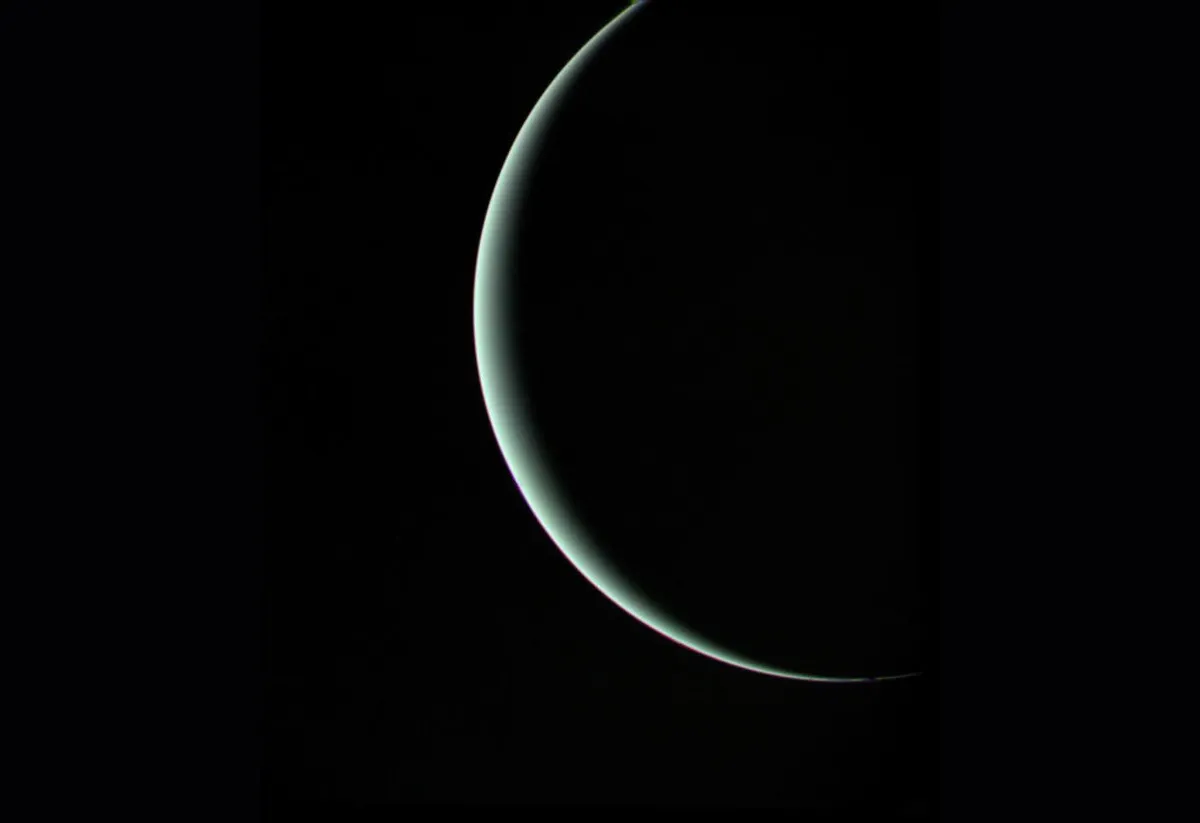
What instruments would a Uranus spacecraft need?
Deciding on what instrumentation to include on a spacecraft is rather like going into a massive sweet shop full of expensive chocolates, only to find you have a few pence in your pocket.
Space is at a premium, and only instruments that can be employed across a number of investigations are going to make the final cut.
First of all, a camera is essential. A picture tells a thousand words and a high resolution camera would provide us with stunningly detailed images of the Uranian atmosphere and its rings, while allowing us to map and scrutinise Uranus's moons.
Looking at Uranus in the infrared would reveal details about the composition of the atmosphere at various depths, and allow scientists both to look for aurorae – we already know they exist – and establish how they are generated.
Uranus has the lowest self-luminosity of all the planets in the Solar System, and its cold temperature would imply that it is some three billion years older than it is thought to be.
A magnetometer (a device for studying magnetic fields) is another must-have.
Magnetic fields can give us a window into the interiors of a world, since planets generate magnetic fields in a variety of ways, depending on their composition and size.
Uranus’s field is one the strangest of them all (see Uranus's biggest mysteries below) and working out how it is generated would tell us a lot about its hidden depths.
The magnetometer could also be deployed to help investigate the ice giant’s moons, and another exciting prospect: the search for subsurface oceans under the icy crusts of the two largest satellites, Titania and Oberon.
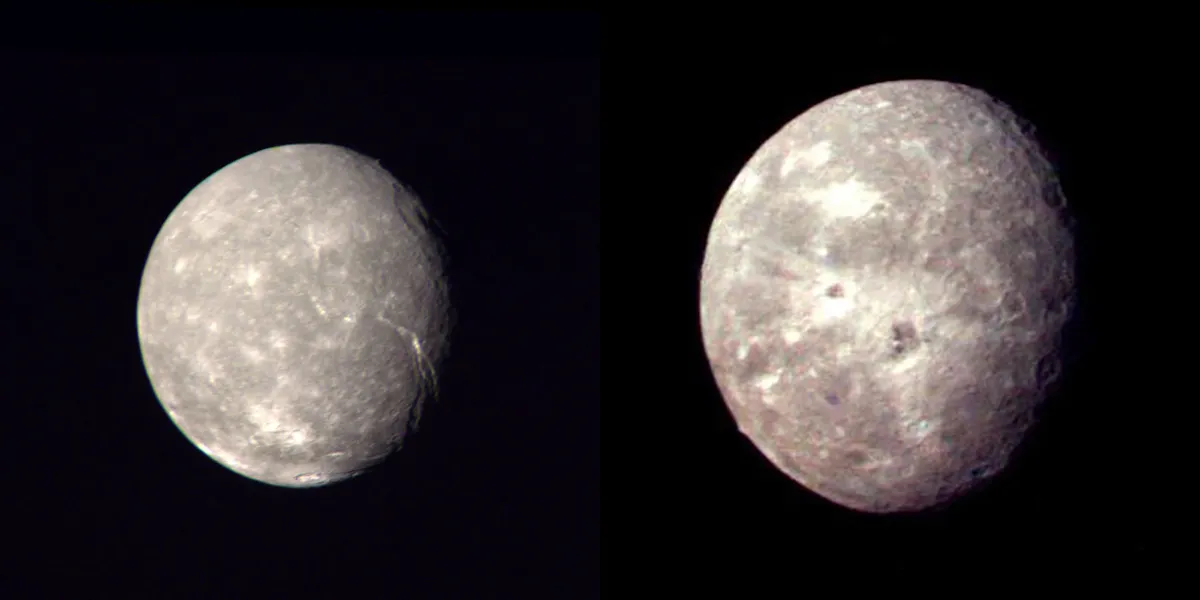
The idea that moons this far out from the Sun may have liquid oceans is not as far fetched as it seems.
Both moons seem to be composed of equal amounts of rock and ice, and infrared spectroscopic observations have revealed crystalline water on the surfaces of each of them.
If such a discovery is made, it will have implications on how habitable a planetary system can be, and what makes a planet habitable.
Other tools would be useful on a Uranus spacecraft. A microwave instrument would help scientists to fathom the planet’s interior workings and composition, and another to measure Uranus’s temperature and luminosity would also be very helpful.
Ice giants like Uranus are suitably different from the inner rocky planets or the gas giants. They have their own story to tell about how planetary systems form and evolve.
Uranus has the lowest self-luminosity of all the planets in the Solar System, and its cold temperature would imply that it is some three billion years older than it is thought to be.
“There is only so much we can do from the ground and a mission like this would really help to answer questions that have puzzled us for decades,” says Arridge.
The Voyager 2 encounter raised new questions beyond the reach of Earth-bound telescopes.
For example, Uranus’s strange magnetic field seems to reconfigure itself every eight hours as the planet rotates. Why this happens is still unknown.
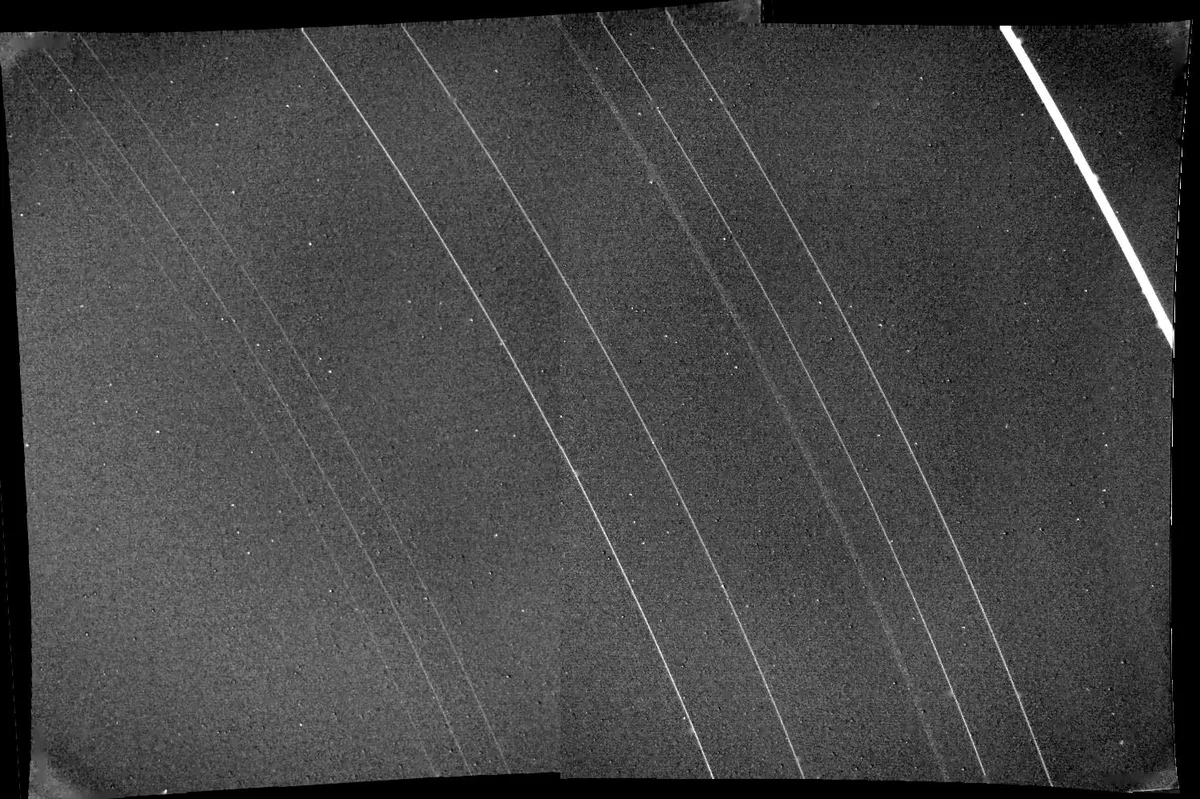
What could we learn from studying Uranus?
Uranus exploration would also allow us to answer more fundamental questions regarding the formation of the Solar System and how it came to be in its current configuration.
Ice giants like Uranus and Neptune are in a class of their own, being suitably different from the inner rocky planets or the gas giants. They have their own story to tell about how planetary systems form and evolve.
Understanding their nature also has wider ranging implications. Many of the exoplanets we’re finding appear to be of similar size to Uranus and Neptune.
If we hope to understand these exoplanets, we need to work out how the ones in our own Solar System work first.
Days and seasons on Uranus are very strange, with each pole experiencing 42 years of darkness followed by 42 years of sunlight.
No doubt the Uranian system will hold many surprises. It may turn out that the planet and its rings are far more dynamic than we ever believed.
Think of the satellite Mab within Uranus’s μ-ring, which is similar to Saturn’s E-Ring.
NASA's Cassini mission at Saturn showed how the moon Enceladus creates the E-Ring: its majestic fountains dump water ice into the system.
Mab is tiny – just 50km across– and so it seems most unlikely that a moon so small could have any internal activity, and yet if it did this would establish exciting new boundaries as to what we thought might be geologically possible.
Uranus's biggest mysteries
1
Strange axial tilt
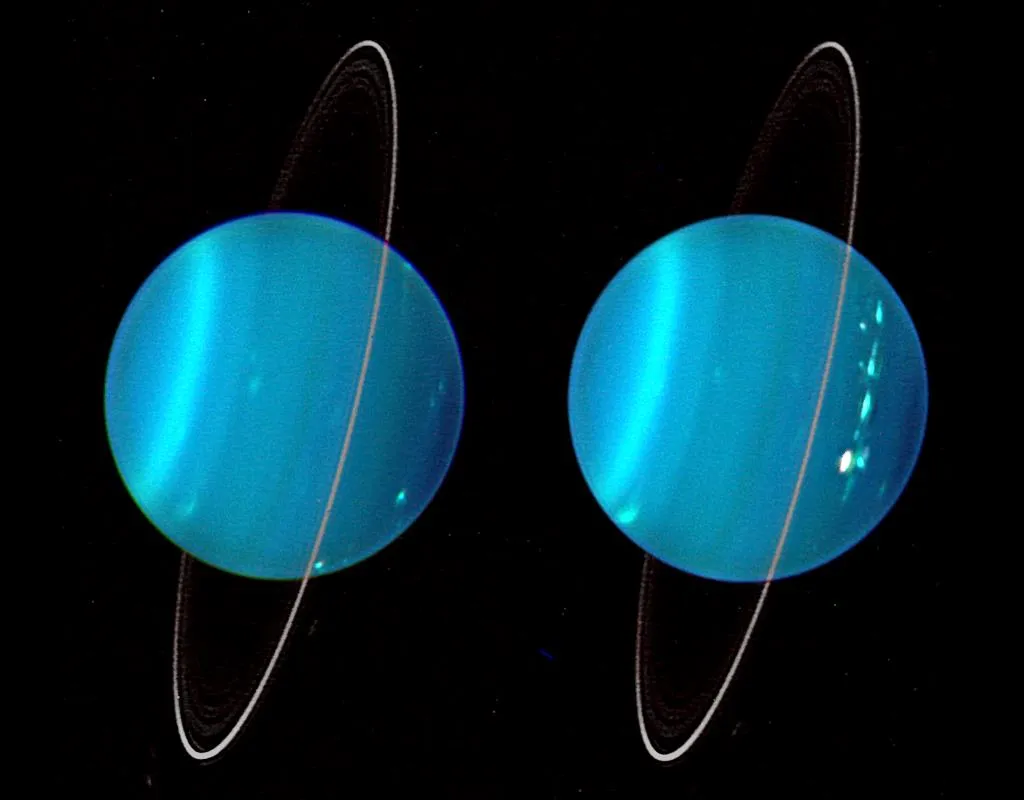
Many planets in the Solar System have an axial tilt. Earth’s is 23.5º and this is what gives rise to our seasons. Uranus, on the other hand, has an axial tilt greater than a right angle, a whopping 98º.
This means the days and seasons on Uranus are very strange, with each pole experiencing 42 years of darkness followed by 42 years of sunlight.
2
Lack of internal heat
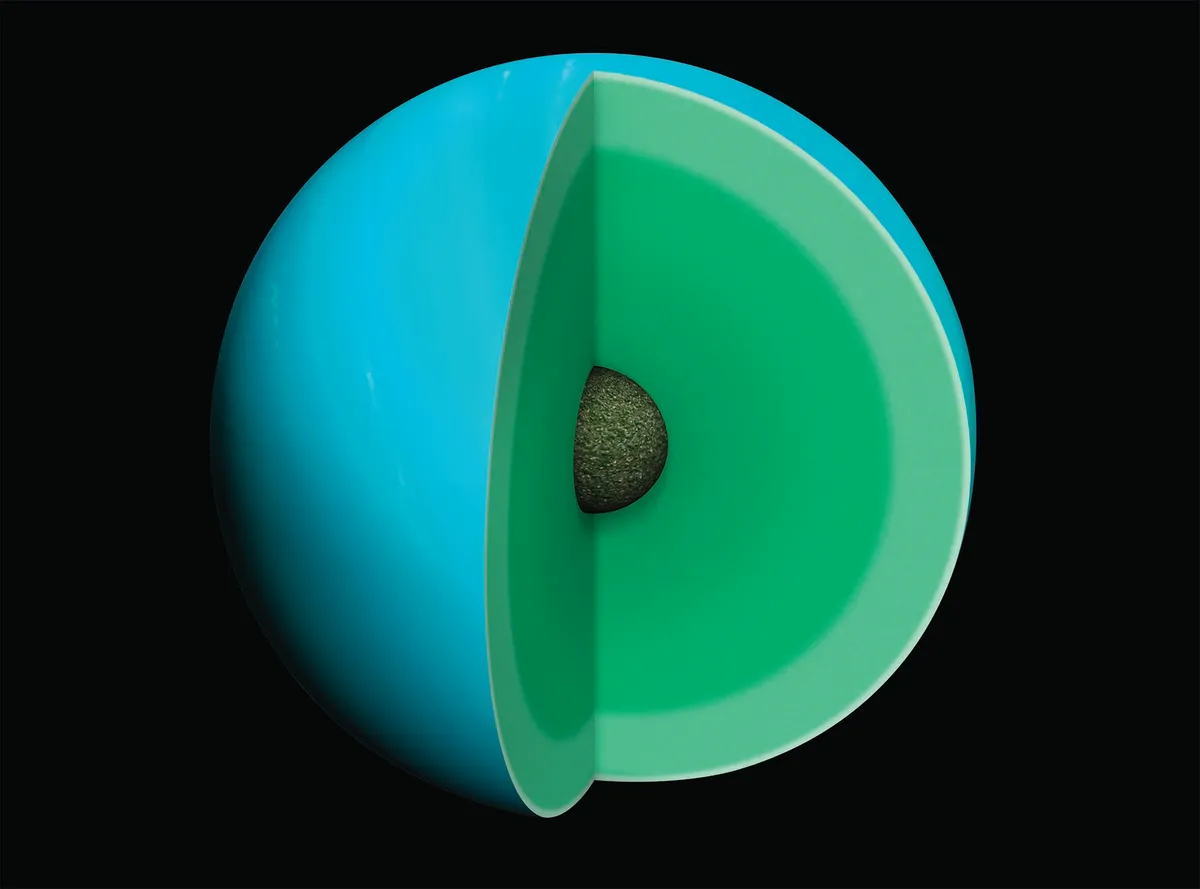
Most planets have an internal heat source. On Earth it is what drives our plate tectonics and volcanism.
The gas giants have greater internal heating and give out much more thermal energy than they receive from the Sun, as does Neptune. Strangely Uranus appears to have very little internal heating.
3
Strange Magnetic Field
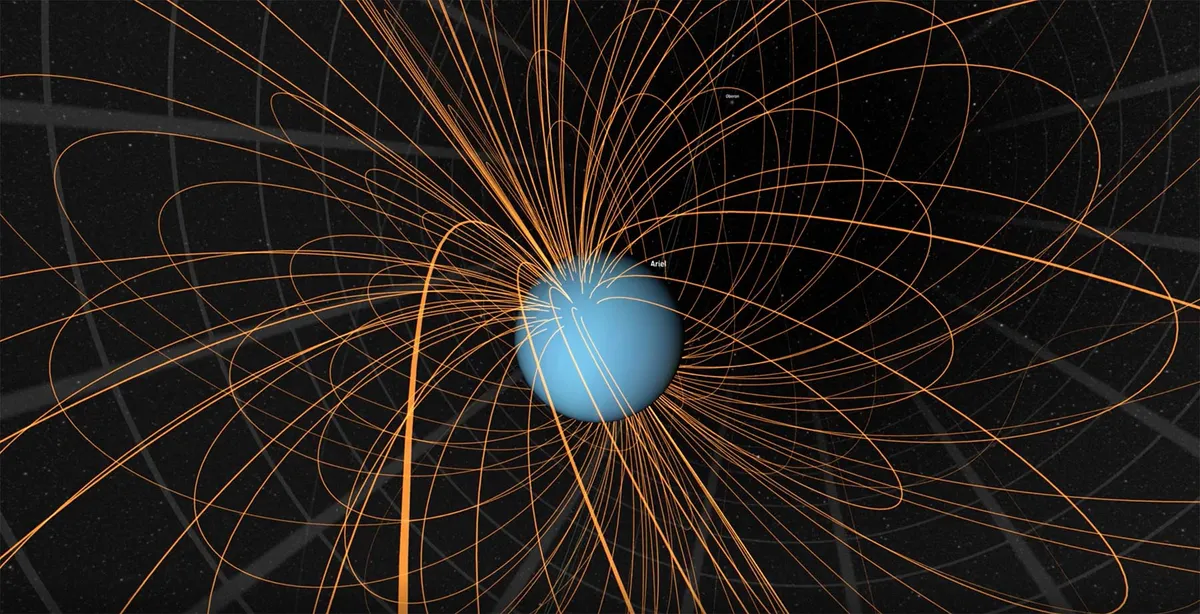
The magnetic field of Uranus is strange in two ways. First, it does not pass straight through the centre like other planetary magnetic fields. As a result, the magnetic field in Uranus’s northern hemisphere is stronger than in it is in the south.
Furthermore, the field is inclined by some 59° from the axis of rotation. Why this is the case is still not certain.
4
Bashed up Satellites
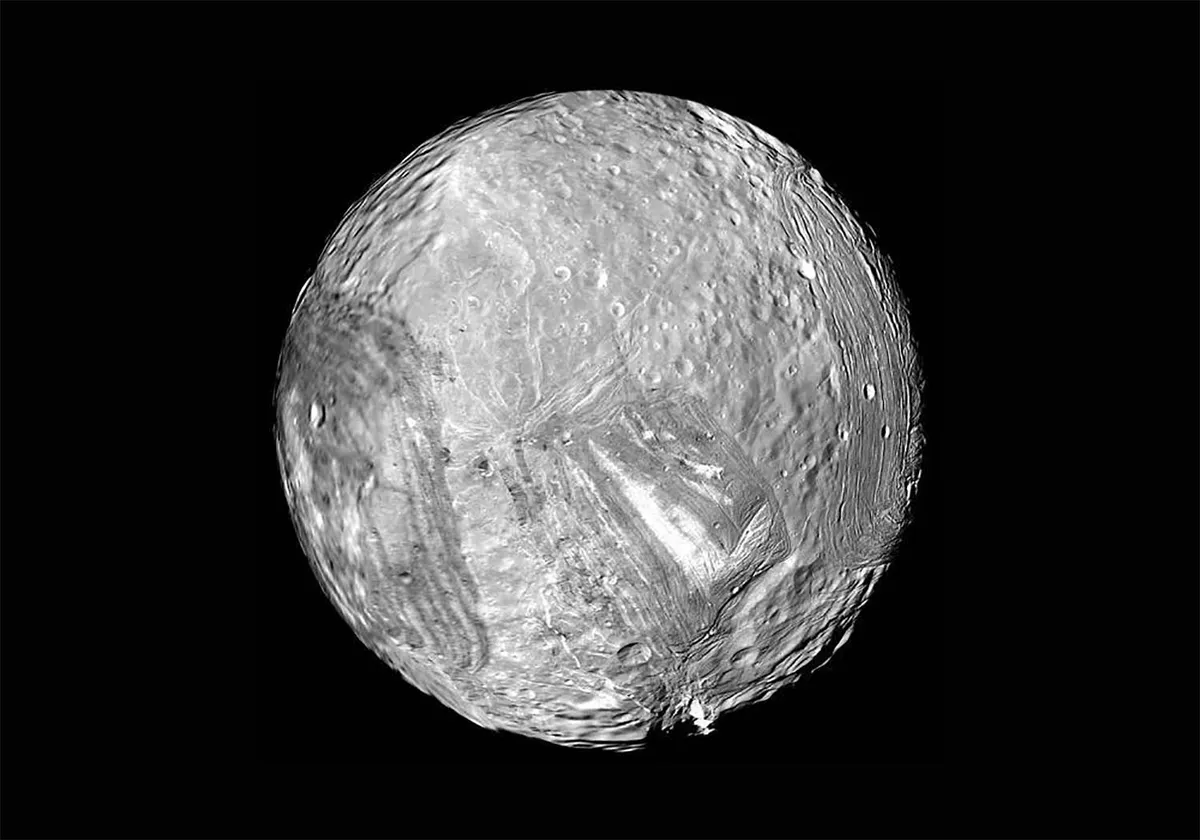
Many of Uranus’s satellites show a high degree of cratering and impact scars. Indeed, Miranda (pictured above) has a surface that resembles a ‘patchwork quilt’ of different terrains.
The favoured explanation is that Miranda may have been broken up and reformed several times during its history. Quite why there is so much impact scarring on the Uranian moons is still unclear.
This article originally appeared in the October 2014 issue of BBC Sky at Night Magazine.

